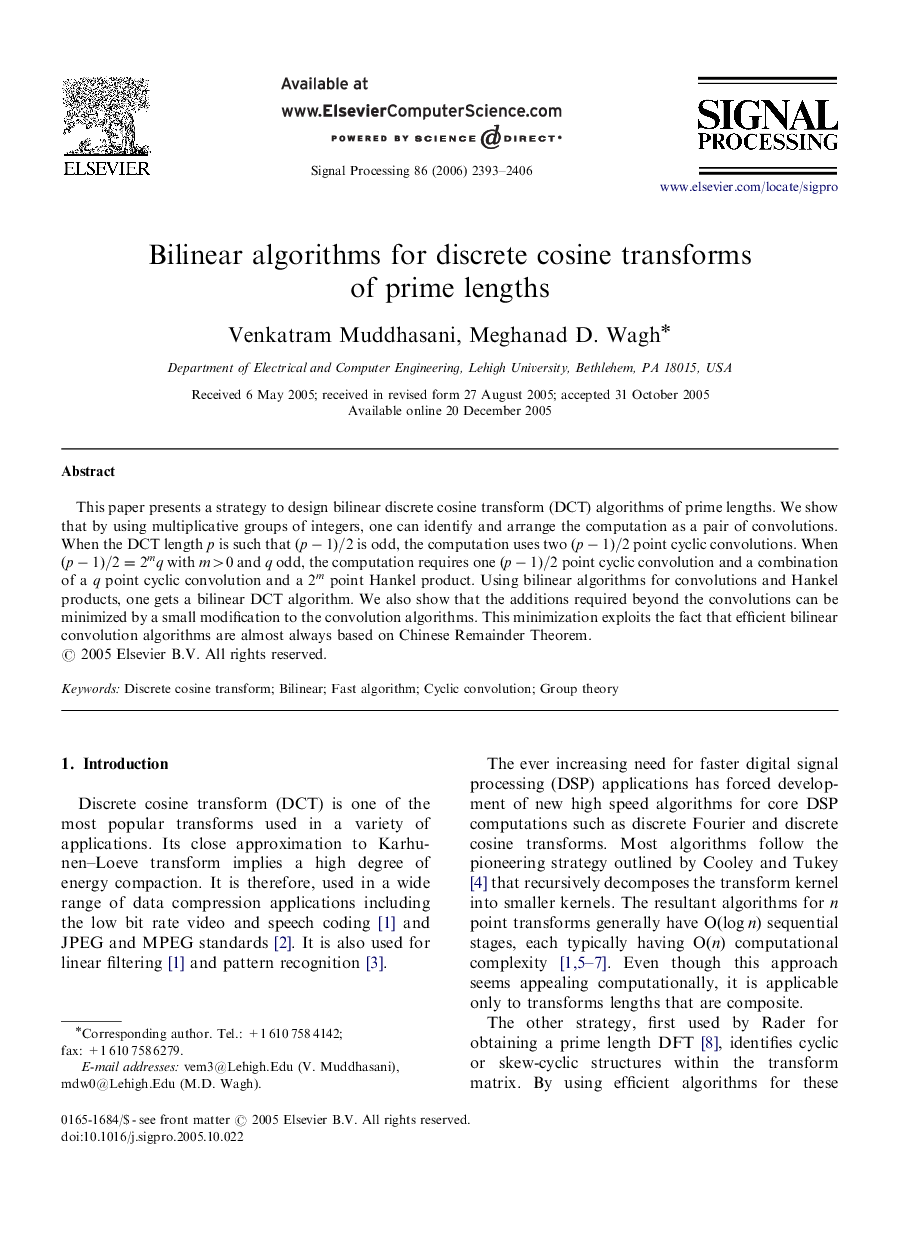| Article ID | Journal | Published Year | Pages | File Type |
|---|---|---|---|---|
| 567323 | Signal Processing | 2006 | 14 Pages |
This paper presents a strategy to design bilinear discrete cosine transform (DCT) algorithms of prime lengths. We show that by using multiplicative groups of integers, one can identify and arrange the computation as a pair of convolutions. When the DCT length p is such that (p-1)/2(p-1)/2 is odd, the computation uses two (p-1)/2(p-1)/2 point cyclic convolutions. When (p-1)/2=2mq(p-1)/2=2mq with m>0m>0 and q odd, the computation requires one (p-1)/2(p-1)/2 point cyclic convolution and a combination of a q point cyclic convolution and a 2m2m point Hankel product. Using bilinear algorithms for convolutions and Hankel products, one gets a bilinear DCT algorithm. We also show that the additions required beyond the convolutions can be minimized by a small modification to the convolution algorithms. This minimization exploits the fact that efficient bilinear convolution algorithms are almost always based on Chinese Remainder Theorem.
